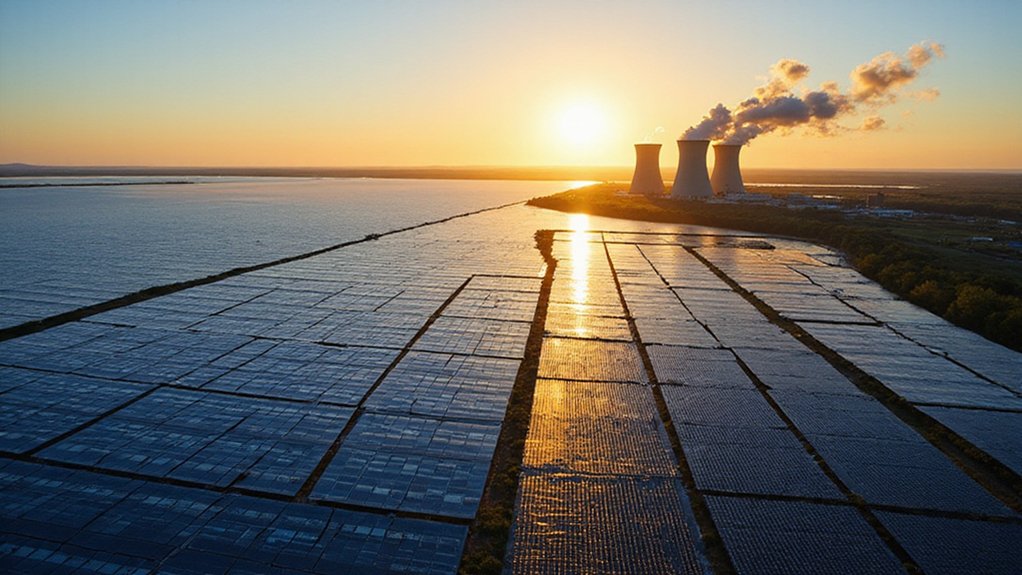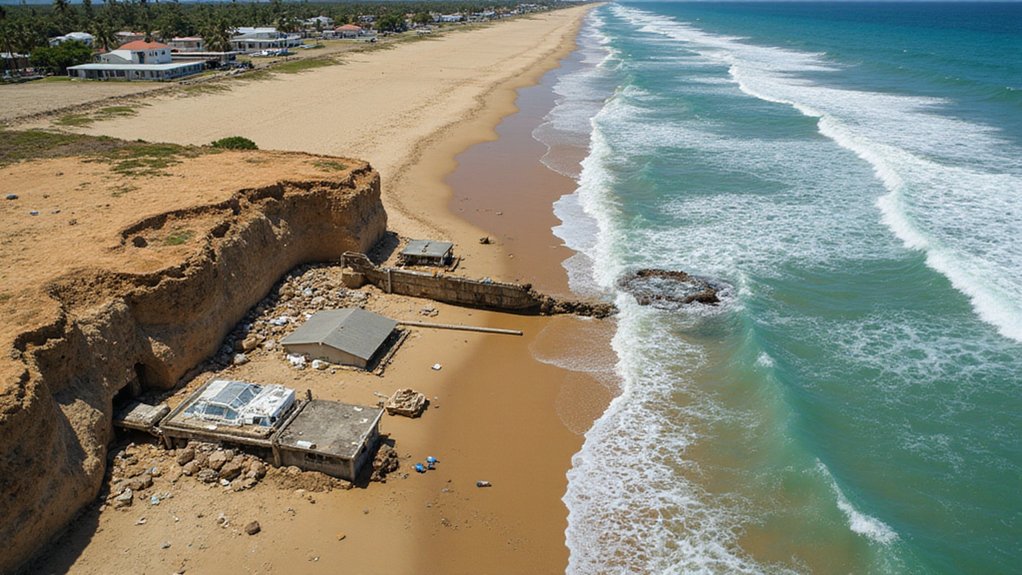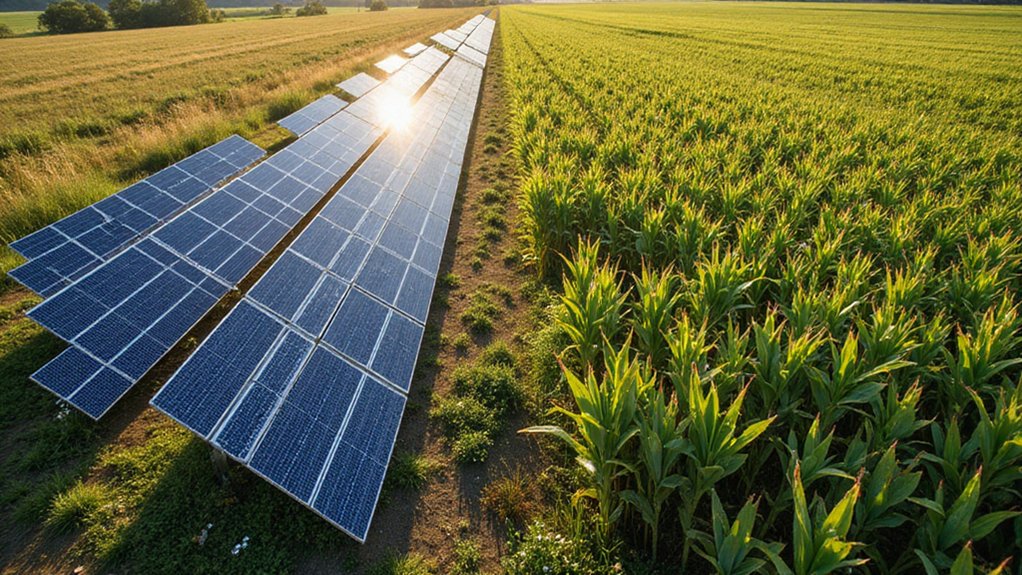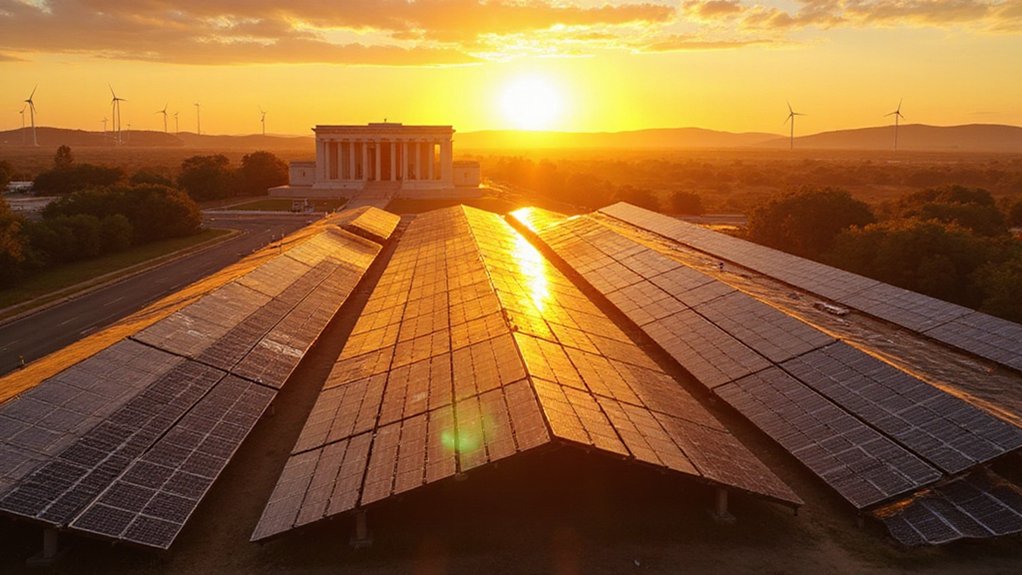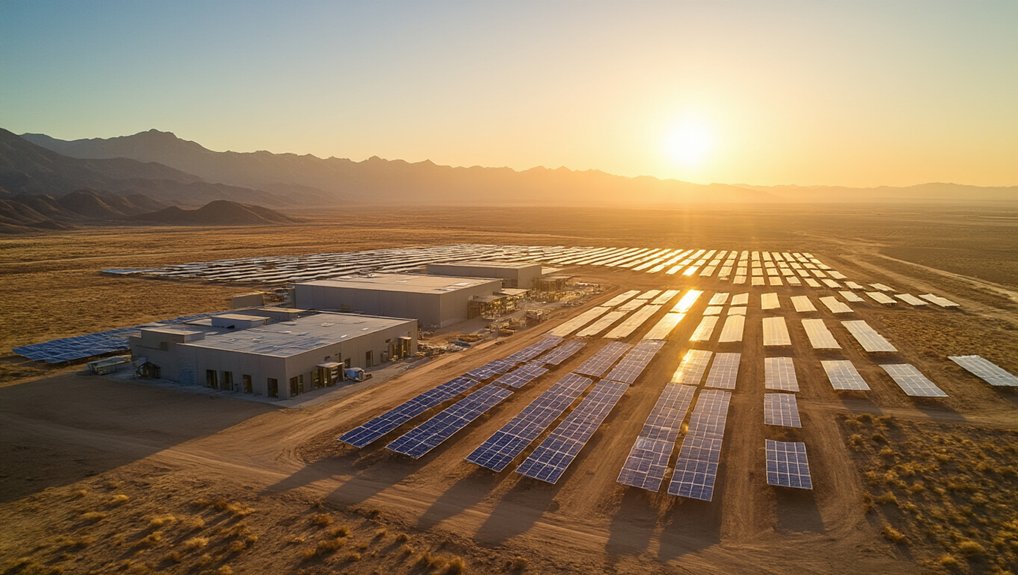After decades of dominance in the clean energy arena, nuclear power is about to be eclipsed by its flashier competitor. Solar energy is set to surpass nuclear generation for the first time in summer 2025, marking a historic shift in how we power our world. Not bad for the new kid on the block.
The numbers are staggering. Solar output has grown 20 times larger than it was in 2012. Just this year, it jumped 34% in the first quarter alone. China and South Asia can’t seem to get enough of those shiny panels. In 2024, solar added twice as much generation as any other electricity source. Talk about an overachiever.
While nuclear has consistently averaged about 252 TWh per month since 2019, solar is projected to exceed 260 TWh monthly in Q2 2025. Sure, solar only shows up during daylight hours and takes a vacation after September, but it’s still making nuclear sweat.
Let’s be real though – nuclear still has some bragging rights. Its capacity factor sits at a whopping 93.5%, meaning it produces maximum output for about 341 days per year. Solar? A measly 24.5%. Just 89 days of maximum output. Nuclear plants are like that reliable coworker who never calls in sick. Solar is more like the brilliant but erratic genius who only shows up when conditions are perfect.
The density difference is stark. Nuclear packs 2,400-2,700 kWh per square meter, while solar manages just 100-300 kWh annually. Nuclear needs a tiny footprint for massive output. Solar sprawls.
Both have their environmental merits – no greenhouse gases during operation. But nuclear leaves behind waste nobody wants in their backyard, while solar just needs some silicon and metals to get going. Solar infrastructure development offers a significant advantage since it can be constructed in 3 to 24 months compared to nuclear’s average 9.4-year timeline. Pakistan has embraced this solar revolution, with 14% of its energy coming from solar in 2024, a dramatic increase from just 4% in 2023.
The grid loves nuclear’s steady reliability. Solar’s unpredictability? Not so much. But with battery storage improving, solar’s getting more dependable by the day. The U.S. has already witnessed battery storage capacity nearly doubling to address these intermittency concerns.
The sun is rising on a new era of energy production. Nuclear’s long reign is facing a surprisingly bright challenger.
References
- https://www.theecoexperts.co.uk/news/solar-power-generation-overtake-nuclear
- https://www.maysunsolar.com/blog-solar-vs-nuclear-which-one-should-we-choose/
- https://a1solarstore.com/blog/pros-and-cons-of-nuclear-energy-core-analysis.html
- https://www.weforum.org/stories/2025/05/solar-power-to-surpass-nuclear-and-more-top-energy-stories/
- https://www.climatecouncil.org.au/resources/csiro-confirms-nuclear-fantasy-would-cost-twice-as-much-as-renewables/
